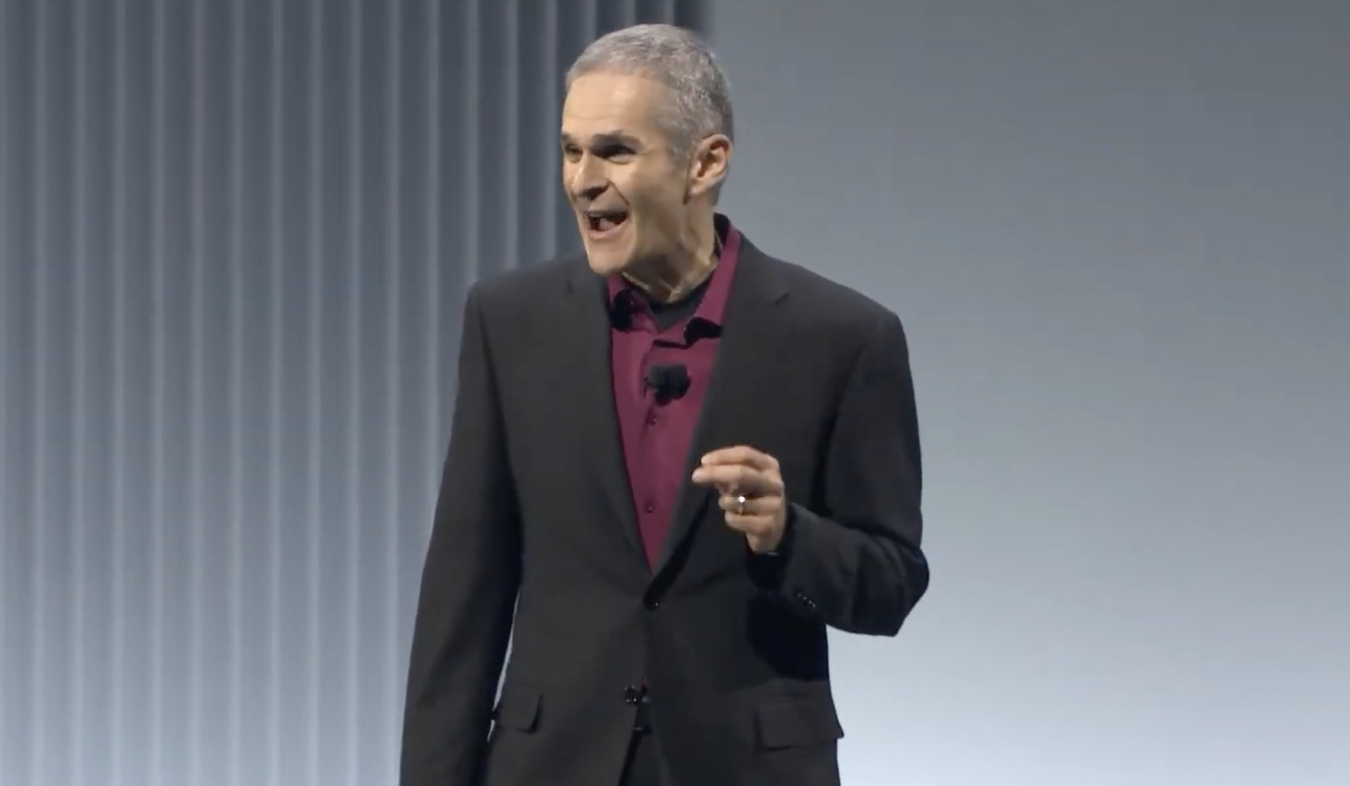
During a prominent address at TechCrunch Disrupt 2025, Roelof Botha, the managing partner of the influential venture capital firm Sequoia Capital, presented a provocative assertion that challenges a foundational belief in modern finance: venture capital, he contended, is not an asset class. This statement, delivered from the main stage, has ignited considerable discussion across the investment landscape, prompting a reevaluation of how capital is allocated and deployed within the innovation ecosystem. Botha’s perspective suggests that merely funneling more funds into Silicon Valley and other tech hubs does not inherently cultivate a greater number of successful enterprises, but rather risks diluting the potential for genuine breakthrough.
Defining an Asset Class and Its Significance
To fully grasp the weight of Botha’s comments, it is essential to understand the conventional definition of an asset class within financial theory. An asset class refers to a grouping of investments that exhibit similar financial characteristics and respond in comparable ways to market forces. Common examples include equities (stocks), fixed income (bonds), real estate, and commodities. Each of these classes possesses a distinct risk-return profile and typically behaves differently under various economic conditions. The concept of asset allocation, a cornerstone of modern portfolio theory, involves strategically distributing investments across diverse asset classes to optimize returns for a given level of risk, largely through the benefits of diversification. Investors, particularly large institutional allocators like pension funds, endowments, and sovereign wealth funds, meticulously categorize and evaluate potential investments based on their perceived asset class, often seeking out assets that are uncorrelated with existing holdings to enhance portfolio resilience.
Botha’s Provocative Stance: "Return-Free Risk"
Botha articulated his argument by describing investment in venture capital as "return-free risk," a statement designed to resonate with those familiar with financial models like the Capital Asset Pricing Model (CAPM). The CAPM posits that investors expect higher returns for taking on higher risks. Botha’s "return-free risk" quip implies that, for many, the high risk inherent in venture investing is not being adequately compensated by superior returns in the current environment. He elaborated that venture capital has historically been seen as uncorrelated with other asset classes, making it an attractive component for diversification. This perception led many allocators to earmark a specific percentage of their portfolios for venture investments, assuming a direct correlation between increased capital inflow and enhanced returns. However, Botha fundamentally disagrees with this premise, asserting that the reality is far more nuanced.
The Paradox of Overcapitalization
A central tenet of Botha’s critique revolves around the idea that an abundance of capital can be detrimental rather than beneficial to the venture ecosystem. He emphasized, "throwing more money into Silicon Valley doesn’t yield more great companies. It actually dilutes that, it actually makes it harder for us to get that small number of special companies to flourish." This perspective highlights a crucial paradox: while capital is undoubtedly necessary for innovation, an excessive supply can lead to unintended negative consequences.
One primary mechanism of this dilution is the inflation of startup valuations. When a large number of venture firms compete for a limited pool of truly transformative ideas, the price of entry into promising deals skyrockets. This can lead to investors paying higher multiples for early-stage companies, compressing potential future returns. Furthermore, an environment flush with capital might reduce the imperative for startups to demonstrate early profitability or sustainable business models. Instead, the focus can shift towards rapid, often expensive, growth at all costs, potentially masking underlying weaknesses that would be exposed in a more capital-constrained environment. This oversupply can also foster a less disciplined approach to investing, as firms feel pressure to deploy their large funds, sometimes leading to investments in less promising ventures.
A Historical Perspective on Venture Capital’s Evolution
The venture capital industry has undergone a dramatic transformation since its modern genesis in the mid-20th century. Early pioneers, often funding nascent electronics and computing companies, operated in a far less crowded and more experimental landscape. Firms like American Research and Development Corporation (ARDC) in the 1940s and, later, the emergence of Silicon Valley giants like Fairchild Semiconductor, laid the groundwork. Sequoia Capital itself, founded in 1972, played a pivotal role in funding iconic technology companies through various epochs.
Botha’s own journey offers a compelling timeline for this evolution. He noted that when he joined Sequoia in 2003, the industry’s landscape was markedly different. At that time, approximately 1,000 venture firms operated in the United States. Today, that number has surged to roughly 3,000, representing a threefold increase in just two decades. This expansion mirrors the broader technological shifts he referenced: in 2003, mobile devices were not ubiquitous, cloud computing was in its infancy, and internet access was limited to approximately 300 million people globally. The subsequent explosion of mobile technology, cloud infrastructure, and global internet penetration has indeed created an unprecedented scale of opportunity for entrepreneurs. However, Botha’s core argument is that while the scale of opportunity has changed dramatically, the efficiency of capital deployment has not necessarily kept pace, and in some ways, has regressed.
Market Dynamics and Societal Impact
The proliferation of venture capital firms and the massive inflows of capital have had multifaceted impacts on the market and society. For entrepreneurs, while the availability of funding might seem like an unmitigated positive, it introduces new challenges. Founders might find it easier to secure initial seed funding, but the subsequent rounds often come with higher expectations for hyper-growth and increasingly complex capital structures. The intense competition among VC firms can lead to "term sheet arbitrage," where founders receive highly favorable terms, sometimes at the expense of long-term strategic alignment.
For Limited Partners (LPs), the institutional investors who commit capital to venture funds, the landscape has become more complex. While the allure of potentially outsized returns from disruptive technologies remains, the sheer volume of funds and the increasing average fund sizes demand more rigorous due diligence. LPs face the challenge of identifying the truly top-tier managers who can consistently deliver alpha in an increasingly crowded field, navigating the "power law" distribution where a small number of outlier investments drive the majority of industry returns. The risk of investing in a mediocre fund, which Botha implies is more prevalent now, directly impacts their ability to meet their fiduciary duties.
Culturally, the venture industry’s growth has solidified Silicon Valley’s image as a global innovation engine, fostering a dynamic entrepreneurial spirit. However, it has also contributed to a heightened "unicorn" obsession, where valuation milestones often overshadow sustainable business fundamentals. This narrative can inadvertently promote a "growth at all costs" mentality, sometimes at the expense of ethical considerations, responsible governance, or long-term societal impact.
Neutral Analytical Commentary and Counterpoints
Botha’s remarks, while provocative, resonate with a sentiment shared by some seasoned investors who have witnessed multiple market cycles. His perspective underscores the challenges of deploying ever-larger sums of capital into an ecosystem that, despite its growth, may have finite capacity for truly transformative ideas at any given moment. The "power law" characteristic of venture returns—where a few exceptional companies generate the bulk of the returns, while many others fail or yield modest results—makes the argument for discerning capital deployment even stronger. If increased capital primarily funds the "middle" or "bottom" of this power law, the overall returns for the asset class could indeed diminish.
However, it is also important to consider alternative viewpoints. Many would argue that venture capital, even with its current challenges, remains a distinct and vital asset class. Its ability to fund high-risk, high-reward innovation that traditional capital markets might shy away from is undeniable. The sheer volume of technological breakthroughs, from artificial intelligence to biotechnology and sustainable energy, suggests that the "opportunity set" for venture investment is indeed vast and expanding. The growth in the number of VC firms could also be interpreted as a healthy maturation of the industry, allowing for greater specialization across stages, geographies, and sectors, thereby better serving a diverse array of founders. The reported $380 billion+ in outcomes over the past two decades, while not necessarily scaling proportionally with capital inflow, still represents significant value creation and economic impact. Proponents of continued VC investment argue that innovation is inherently capital-intensive, and a robust funding ecosystem is crucial for translating scientific discovery into market-ready solutions.
The Future Trajectory of Venture Capital
Botha’s challenging insights invite a critical reevaluation of venture capital’s role and structure. His comments suggest a potential shift in focus for the industry, moving away from simply deploying capital towards a more rigorous emphasis on value creation and fundamental business strength. This could manifest as increased selectivity among VC firms, a greater emphasis on operational support for portfolio companies, and a return to more disciplined valuation methodologies. For Limited Partners, it may necessitate an even more granular approach to manager selection, prioritizing funds with demonstrable track records of disciplined investing and genuine expertise, rather than simply allocating based on broad asset class assumptions. The debate also highlights the importance of innovation’s true drivers: exceptional talent, groundbreaking ideas, and robust execution, all of which require capital but are not simply generated by its mere presence.
Ultimately, Roelof Botha’s assertion serves as a significant inflection point, prompting a necessary discourse about the sustainability and efficacy of the current venture capital model. It underscores that while capital is a lubricant for innovation, it is not a panacea, and its judicious deployment remains paramount for fostering the truly transformative companies of tomorrow. The industry’s continued evolution will undoubtedly be shaped by how it addresses these fundamental questions regarding its identity and impact.




